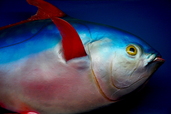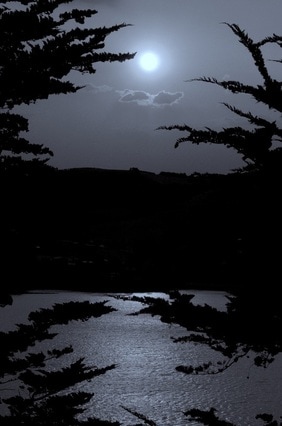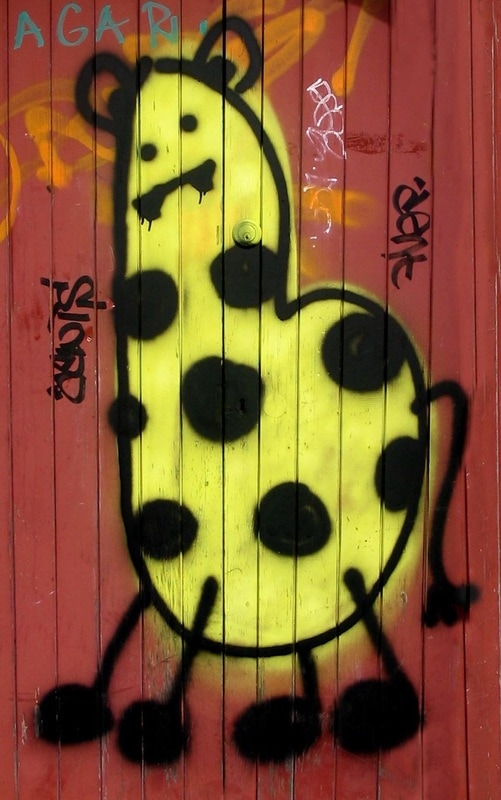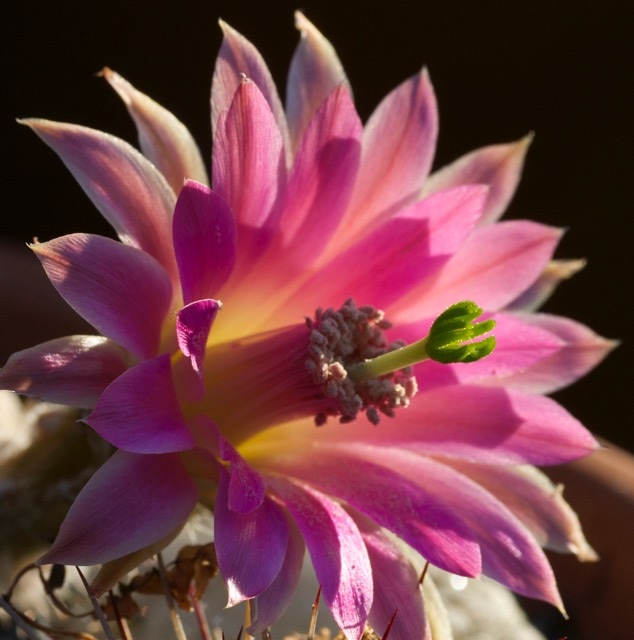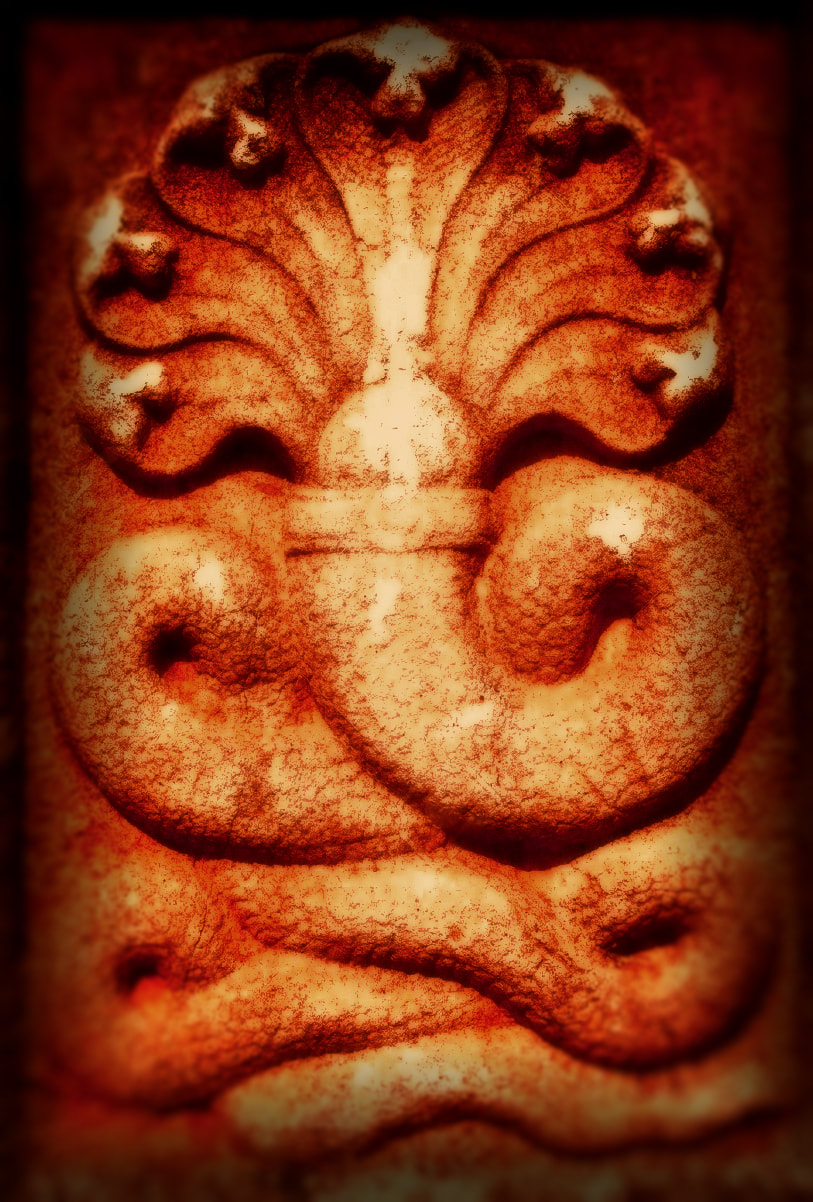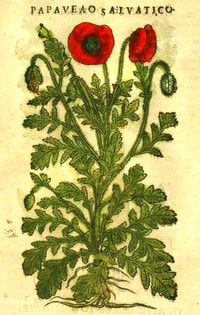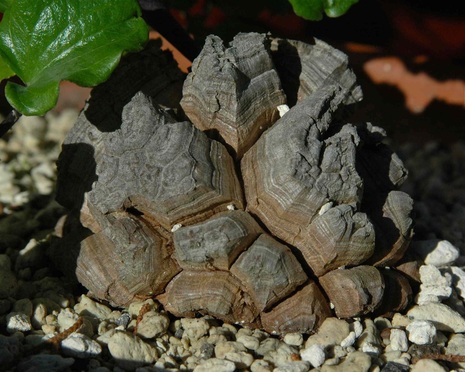 My plant, showing the texture apparent even in a young caudex.
My plant, showing the texture apparent even in a young caudex. For those of us who enjoy a bit of vegetal strange, the genus Dioscorea really ticks the boxes in both its habits and appearance. Dioscorea elephantipes, (syn. Testudinaria elephantipes) is variously known as the Elephant's Foot, the Elephant Yam, Hottentot Bread etc both because of its distinctive tortoise-like corky, fissured caudex and the fact that a starchy heart dwells beneath them, supposedly consumed by Bushmen in times of hardship. The caudex or lump stores water and carbs on behalf of the plant and allows it to survive the extreme conditions that occur in its natural habitat, namely the Clanwilliam district of the Western Cape, extending over into the Eastern Cape; not an area renowned for environmental largesse. In situ it experiences torrential thunderstorms, baking daytime temps and frosty winters, no place for a delicate flower of any description and I can testify that elephantipes is one tough nut, even in the hands of a dufus like myself.
Like many desert plants they have a dormancy period when visible growth ceases with the intent of riding out the worst of whatever conditions it experiences. In the case of elephantipes, that would be a waterless and 40˚C summer, a reversal of the dormancy many other succulents or xerophytes exhibit and it can be a bit of a shock when the rather frilly and extensive vine sprouting from a growth point near the top of the caudex declines, shrivels and drops dead at what seems like the peak season for other fatties. Do not be alarmed; this simply means that your yam is happy and everything is going well. Down here in its native hemisphere my vine starts to turn yellow, lose its leaves and go into dormancy at the end of November, the start of the hottest weather. When it was sent down to me a few years back from the (subtropical) north of New Zealand, it sulked for a year, missing an entire growing season; this is apparently normal for a plant shifted to a new climatic situation, so if it happens to you, just put the dormant caudex in half shade, water it very lightly now and then and be patient. One day you'll come out and find a glossy brown vine bud poking out of the corky grey canyons and this will branch in no time to the kind of structure in the first photo. Not achieving dormancy is said to reduce the plant's otherwise considerable lifespan, which may be as much as a century.
The caudex doesn't enjoy being cooked in full, hot sunlight so ensure it's either shaded by its vine or adjacent plants. Bury it by at least a third in its potting mix so that the roots, which emerge quite laterally from the base of the plant, can engage the soil properly. I personally mound a bit of pumice around and beneath all caudex just to be on the safe side since I tend to overwater. They do best in the ground where they can access moisture and expand to their starchy little heart's content, in time becoming enormous, up to a (slightly apocryphal, IMO) metre high. The flowers are small, fluffy looking, greenish-yellow and produced in winter and you'll need both male and female plants to produce seed. Large potted Dioscorea become too heavy to lift so keep that in mind if you need to shift yours; we seldom dip below 0˚C, so mine stays outdoors all year round and seems perfectly happy.
I highly recommend elephantipes as an enduringly appealing and easycare succulent that rewards the grower amply for the scant attention it requires. There are other, equally spectacular members of the Dioscorea family in cultivation and they are also worth a look if a nice fat caudex is your thing.
I went outside today and discovered that mine had met with an 'accident' (side-eye in a certain direction) and had its vine snapped off at the base =( I hope it puts out another before the next dormant period. Doh. And I should add that I welcome comments on all the flora posts (love to hear other people's experiences) and in fact will just go off now and open comments on previous ones.


 RSS Feed
RSS Feed



